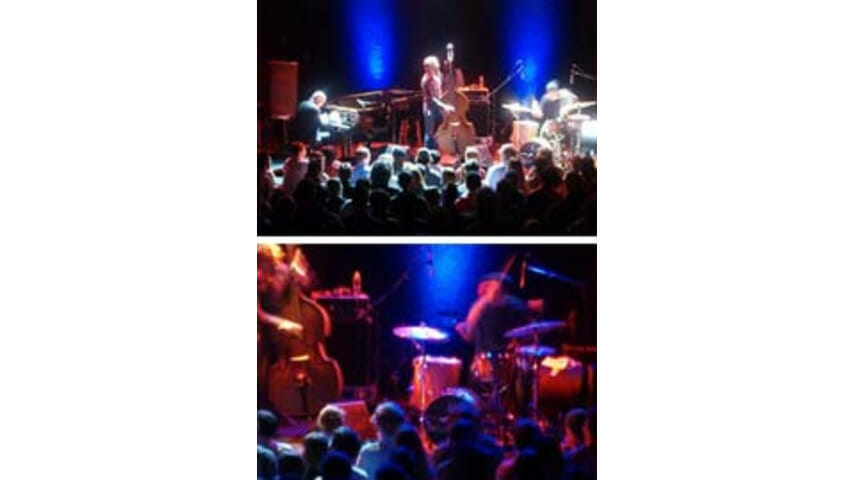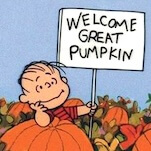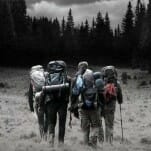The Bad Plus – Live at the Bowery Ballroom

Jazz has always been cool. And the musicians behind it have always been the coolest of cool. The list of the genre’s legends—including Miles Davis, John Coltrane, Dave Brubeck, and Bill Evans—reads like a royal court; these legends have come, in many ways, to define jazz and what we think it should sound like.
Enter three unassuming figures—two stocky, one thin—on the jazz scene, and you have The Bad Plus, a group that’s doing a stand-up job at redefining jazz for a new, younger generation of music lovers. They’ve taken the traditional definition and thrown it out the window, and it has landed in a beautiful mess for fans to stare at in amazement (and for some purists, probably in disgust).
A sizable crowd of eagerly waiting, mostly twenty- and- thirty-something concertgoers have convened at New York City’s Bowery Ballroom on the Lower East Side to gawk and stare at this exquisite amalgam of the past, present and future of jazz: a piano, a double bass and a stripped-down drum kit, played by three men who make up one of the most interesting, intellectual and innovative modern-jazz ensembles in ages.
The Bad Plus’s setup is egalitarian in every way, and this equality speaks volumes about the group’s sound; the instruments are in a line at the front of the stage. Drummer David King isn’t tucked away in the back but is sitting stage left. Pianist Ethan Iverson is stage right with his body facing the crowd, and bassist/bashful group spokesman Reid Anderson is front-and-center.
“New York City always knows how to f—ing represent,” Anderson says, holding back a million-dollar grin. And the members of The Bad Plus do a little representing themselves.
Playing most of the tunes from their latest album, Give, they show off not only a keen mastery of their instruments, but also the flare, rawness and freedom of improvisation that are among the key elements of traditional jazz. They begin their smoking set with the tri-colored “Do Your Sums-Die Like a Dog-Play For Home,” its syncopated rhythms and slow/fast time signature keeping the audience guessing as to when it should move its collective feet, a rare site at a jazz concert.
-

-

-

-

-

-

-

-

-

-

-

-

-

-

-

-

-

-

-

-

-

-

-

-

-

-

-

-

-

-

-

-

-

-

-

-

-

-

-

-








































